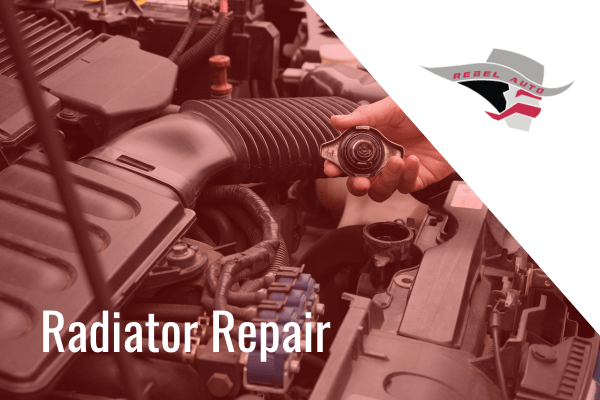How Do You Know When Your Radiator Is Bad

The radiator plays a vital role in your car's cooling system, preventing the engine from overheating and suffering catastrophic damage. Recognizing the signs of a failing radiator early on is crucial for maintaining your vehicle's health and avoiding costly repairs. This article will guide you through the telltale signs of a bad radiator, common causes, and practical solutions for car owners and mechanics alike.
Recognizing the Symptoms: Trouble Signs to Watch For
Identifying a faulty radiator early can save you from significant engine damage. Here are some common symptoms to watch out for:
- Overheating Engine: This is often the most obvious sign. If your temperature gauge consistently reads higher than normal, especially during hot weather or when idling, it's a major red flag. For example, a 2015 Honda Civic or a 2018 Toyota Camry exhibiting this symptom warrants immediate investigation.
- Leaking Coolant: Look for puddles of green, orange, pink, or blue liquid under your car, especially near the front. The color depends on the type of coolant used. Leaks can originate from cracks in the radiator, hose connections, or the radiator cap. A common issue in older Ford F-150s is coolant leakage from the radiator seams.
- Low Coolant Level: Regularly check your coolant reservoir. If you find yourself constantly topping it off, it indicates a leak somewhere in the system, potentially within the radiator. Keep an eye on coolant levels in vehicles like a 2012 Chevrolet Cruze, which are known to sometimes experience cooling system issues.
- Rust and Corrosion: Visually inspect the radiator for signs of rust, corrosion, and mineral deposits. These can weaken the radiator's structure and lead to leaks. This is especially common in older vehicles, such as a 2005 Jeep Grand Cherokee, that haven't had regular coolant flushes.
- Sludge in the Radiator: If you notice a thick, oily sludge when you check your coolant, it could indicate a blown head gasket, which allows oil to mix with the coolant, or corrosion within the radiator itself. This is a serious problem that requires immediate attention.
- Deformed or Damaged Fins: The radiator fins help dissipate heat. If they are bent, damaged, or clogged with debris, the radiator's cooling efficiency will be reduced.
- White Exhaust Smoke: While not directly a radiator issue, excessive white smoke coming from the exhaust pipe could indicate coolant is leaking into the engine cylinders due to a blown head gasket caused by overheating, which could have been initiated by a bad radiator.
Common Causes of Radiator Failure
Understanding the root causes of radiator problems can help you prevent them in the future:
- Corrosion: Over time, coolant can become acidic and corrode the internal components of the radiator. Using the wrong type of coolant or neglecting coolant flushes accelerates this process.
- Physical Damage: Road debris, such as rocks and gravel, can puncture the radiator core, leading to leaks. Accidents can also cause significant damage.
- Clogging: Debris, rust particles, and mineral deposits can accumulate inside the radiator, restricting coolant flow and reducing its cooling capacity.
- Pressure Imbalance: A faulty radiator cap can fail to maintain the correct pressure within the cooling system, leading to leaks and overheating.
- Age: Like any other car part, radiators have a lifespan. Over time, they can simply wear out and become prone to leaks and other problems.
Troubleshooting and Solutions: Getting to the Root of the Problem
Once you've identified a potential radiator issue, here's how to troubleshoot and address it:
- Pressure Test: A cooling system pressure test can help identify leaks. A mechanic will attach a pressure tester to the radiator cap opening and pressurize the system. Any drops in pressure indicate a leak.
- Visual Inspection: Carefully inspect the radiator for visible leaks, cracks, and damage. Pay close attention to the seams and hose connections.
- Coolant Flush: If you suspect clogging, perform a coolant flush to remove debris and deposits. Use a radiator flush product and follow the instructions carefully. For example, using incorrect coolant in a Volkswagen Jetta can lead to gelling and clogging within the system.
- Radiator Cap Test: Use a radiator cap tester to ensure the cap is holding pressure correctly. A faulty cap should be replaced immediately.
- Hose Inspection: Check the radiator hoses for cracks, bulges, and leaks. Replace any damaged hoses.
- Radiator Repair vs. Replacement: Minor leaks in some older radiators might be repairable using specialized sealants. However, for significant damage or extensive corrosion, radiator replacement is generally the best and most reliable solution.
- Professional Inspection: If you are not comfortable performing these tests yourself, or if you suspect a more serious issue, take your car to a qualified mechanic for a thorough inspection.
Preventive Maintenance: Keeping Your Radiator Healthy
Regular maintenance is key to extending the life of your radiator and preventing costly repairs:
- Regular Coolant Flushes: Follow your manufacturer's recommended coolant flush intervals. This helps remove debris and prevent corrosion.
- Use the Correct Coolant: Always use the type of coolant recommended for your vehicle. Mixing different types of coolant can lead to corrosion and other problems.
- Inspect Hoses and Clamps: Regularly inspect your radiator hoses and clamps for signs of wear and tear. Replace them as needed.
- Keep the Radiator Clean: Periodically clean the radiator fins to remove dirt and debris. A soft brush and gentle spray of water can be used.
- Monitor Coolant Level: Regularly check your coolant level and top it off as needed.
By understanding the signs of a bad radiator and implementing these preventive maintenance tips, you can keep your car's cooling system in top condition and avoid costly engine repairs. Remember, early detection and proactive maintenance are your best defenses against radiator failure.
